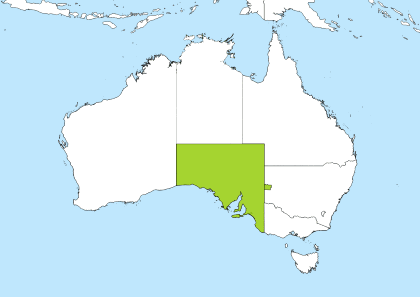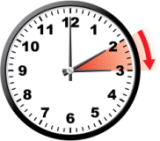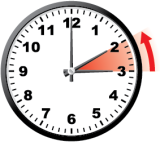ACDT to CT Converter
Time Difference
Australian Central Daylight Time is 15 hours and 30 minutes ahead of Central Daylight Time
2:30 pm14:30 in ACDT is 11:00 pm23:00 in CDT
ACDT to CT call time
Best time for a conference call or a meeting is between 9pm-11pm in ACDT which corresponds to 4:30am-6:30am in CT
2:30 pm14:30 Australian Central Daylight Time (ACDT). Offset UTC +10:30 hours
11:00 pm23:00 Central Daylight Time (CDT). Offset UTC -5:00 hours
2:30 pm14:30 ACDT / 11:00 pm23:00 CDT
| ACDT | CT |
|---|---|
| 12am (midnight) | 8:30 am |
| 1am | 9:30 am |
| 2am | 10:30 am |
| 3am | 11:30 am |
| 4am | 12:30 pm |
| 5am | 1:30 pm |
| 6am | 2:30 pm |
| 7am | 3:30 pm |
| 8am | 4:30 pm |
| 9am | 5:30 pm |
| 10am | 6:30 pm |
| 11am | 7:30 pm |
| 12pm (noon) | 8:30 pm |
| 1pm | 9:30 pm |
| 2pm | 10:30 pm |
| 3pm | 11:30 pm |
| 4pm | 12:30 am |
| 5pm | 1:30 am |
| 6pm | 2:30 am |
| 7pm | 3:30 am |
| 8pm | 4:30 am |
| 9pm | 5:30 am |
| 10pm | 6:30 am |
| 11pm | 7:30 am |
| 0:00 | 8:30 |
| 1:00 | 9:30 |
| 2:00 | 10:30 |
| 3:00 | 11:30 |
| 4:00 | 12:30 |
| 5:00 | 13:30 |
| 6:00 | 14:30 |
| 7:00 | 15:30 |
| 8:00 | 16:30 |
| 9:00 | 17:30 |
| 10:00 | 18:30 |
| 11:00 | 19:30 |
| 12:00 | 20:30 |
| 13:00 | 21:30 |
| 14:00 | 22:30 |
| 15:00 | 23:30 |
| 16:00 | 0:30 |
| 17:00 | 1:30 |
| 18:00 | 2:30 |
| 19:00 | 3:30 |
| 20:00 | 4:30 |
| 21:00 | 5:30 |
| 22:00 | 6:30 |
| 23:00 | 7:30 |
Australian Central Daylight Time
Offset: ACDT is 10 hours and 30 minutes ahead Greenwich Mean Time (GMT) and is used in Australia
Countries: It is used in following countries: Australia
Principal Cities: The largest city in the ACDT timezone is Adelaide from Australia with population about 1.225 million people. Other major cities in the area are Adelaide Hills, Mount Gambier, Morphett Vale, Prospect

Daylight Saving: Australian Central Daylight Time (ACDT) is a daylight saving/summer timezone, however during winter some places switch clocks for one hour back and observe Australian Central Standard Time (ACST).
 Start: Australian Central Daylight Time (ACDT) started on Sunday, October 5, 2025 at 2:00 am local time and clocks were set one hour forward to Sunday, October 5, 2025, 3:00 am. Daylight saving starts annually the on first Sunday of October
Start: Australian Central Daylight Time (ACDT) started on Sunday, October 5, 2025 at 2:00 am local time and clocks were set one hour forward to Sunday, October 5, 2025, 3:00 am. Daylight saving starts annually the on first Sunday of October
 End: Australian Central Daylight Time (ACDT) ends on Sunday, April 5, 2026 at 3:00 am local time and clocks are set one hour back to Sunday, April 5, 2026, 2:00 am local standard time instead. Daylight saving ends annually the on first Sunday of April
End: Australian Central Daylight Time (ACDT) ends on Sunday, April 5, 2026 at 3:00 am local time and clocks are set one hour back to Sunday, April 5, 2026, 2:00 am local standard time instead. Daylight saving ends annually the on first Sunday of April
ACDT representations, usage and related time zones
- +1030 - basic
- +10:30 - extended
- +1030 - sign character (+) followed by a four digit time providing hours (10) and minutes (30) of the offset. Indicates ten hour and thirty minutes time differences to the east of the zero meridian.
- Australia/Adelaide
- Australia/Broken_Hill
- Australia/South
- Australia/Yancowinna
- ACDT - Australian Central Daylight Time
- LHST - Lord Howe Standard Time
Central Time
Central Time (PT) is a general term used to describe the areas that observe either the Central Standard Time (CST) or Central Daylight Time (CDT) in the United States and Canada. CT is not static but switches between CDT and CST.
Territories observing the time zone are primarily in North and Central America. It runs through several Mexican and U.S. states, as well as several Canadian provinces and Central American countries.
Countries: It is used in following countries: Belize, Canada, Costa Rica, Guatemala, Honduras, Mexico, Nicaragua, El Salvador, United States.
Principal Cities: The largest city in the CST timezone is Mexico City from Mexico with population about 12.294 million people. Other major cities in the area are Chicago, Houston, Iztapalapa, Ecatepec.
French: HNC - Heure Normale du Centre
Spanish: CT - Tiempo Central Estándar, CT - Zona Centro
Central Time (PT) is a general term used to describe the areas that observe either the Central Standard Time (CST) or Central Daylight Time (CDT) in the United States and Canada. CT is not static but switches between CDT and CST.
Territories observing the time zone are primarily in North and Central America. It runs through several Mexican and U.S. states, as well as several Canadian provinces and Central American countries.
Countries: It is used in following countries: Belize, Canada, Costa Rica, Guatemala, Honduras, Mexico, Nicaragua, El Salvador, United States.
Principal Cities: The largest city in the CST timezone is Mexico City from Mexico with population about 12.294 million people. Other major cities in the area are Chicago, Houston, Iztapalapa, Ecatepec.
French: HNC - Heure Normale du Centre
Spanish: CT - Tiempo Central Estándar, CT - Zona Centro
CT representations, usage and related time zones
- -06 - basic short
- -0600 - basic
- -06:00 - extended
- -0600 - sign character (-) followed by a four digit time providing hours (06) and minutes (00) of the offset. Indicates six hour and zero minutes time differences to the west of the zero meridian.
- Sierra - Military abbreviation for CT
- S - short form of 'Sierra'
- Central Time - UTC -6
- Chuuk Time - UTC +10
- CST - Central Standard Time
- CT - Central Time
- MDT - Mountain Daylight Time
- EAST - Easter Island Standard Time
- GALT - Galapagos Time
- S - Sierra Time Zone
